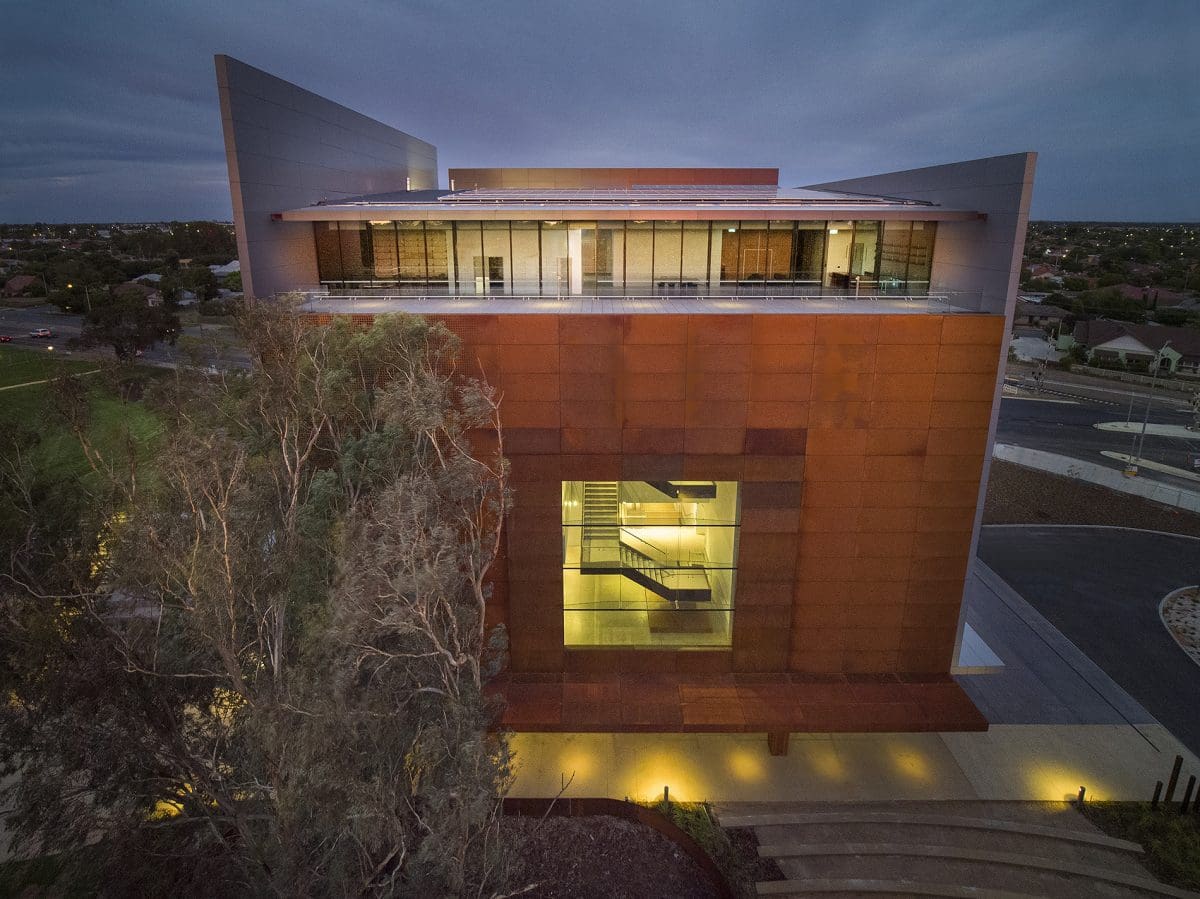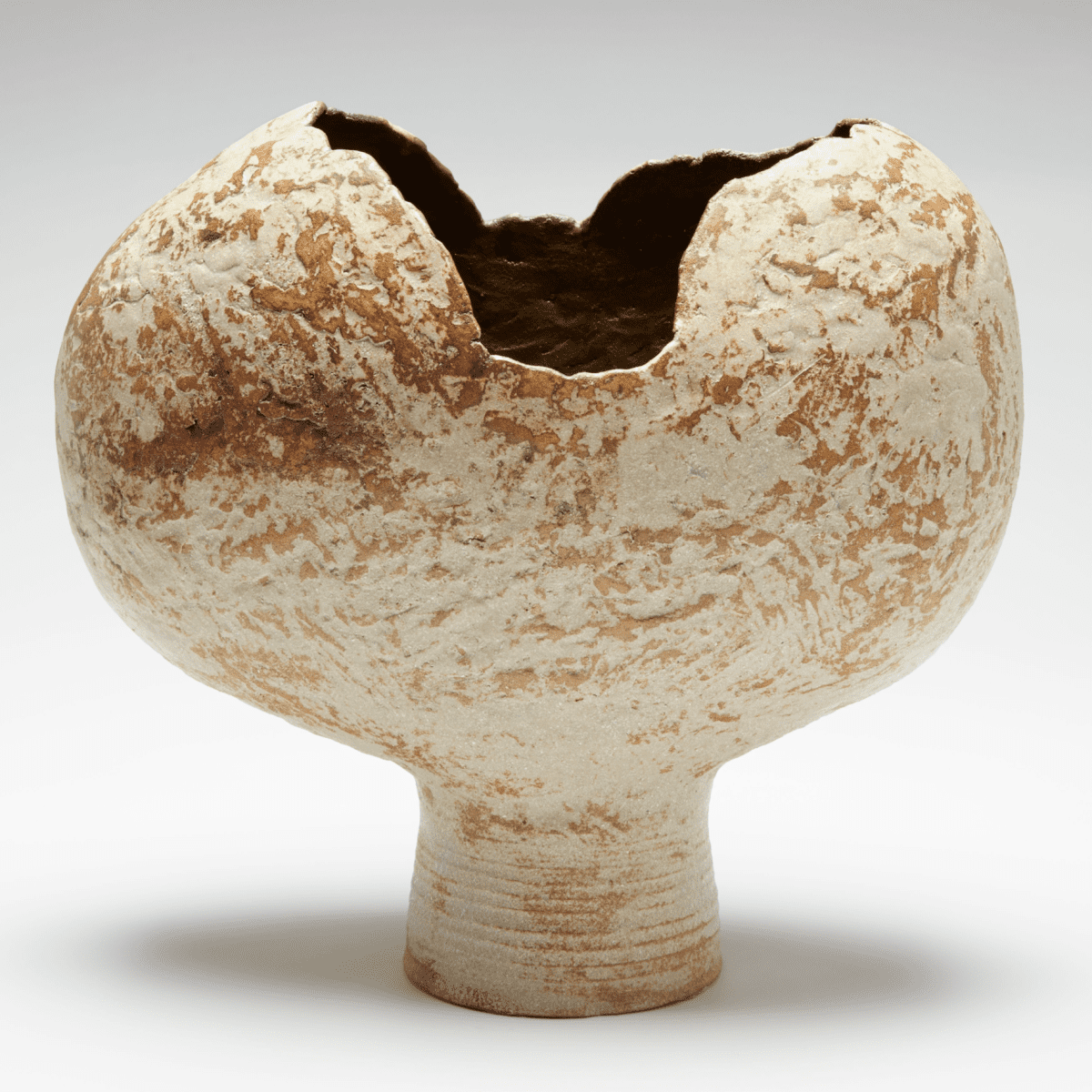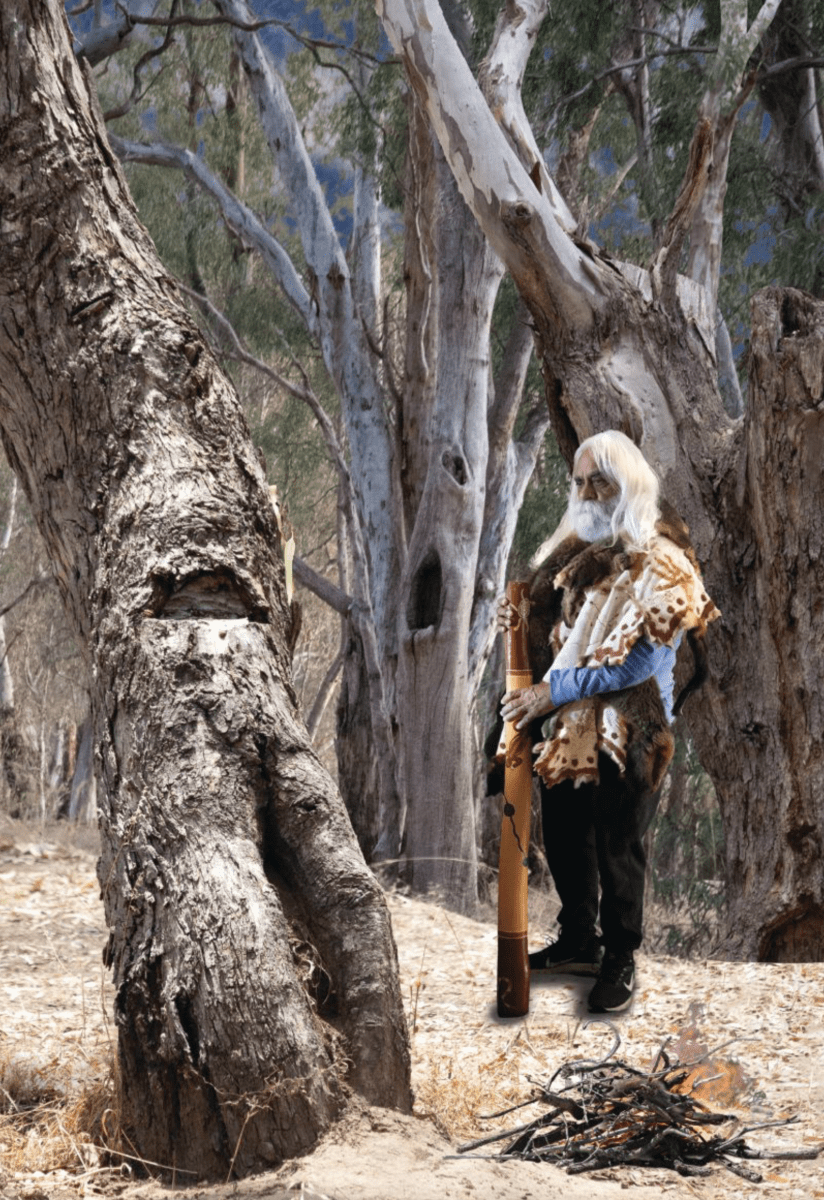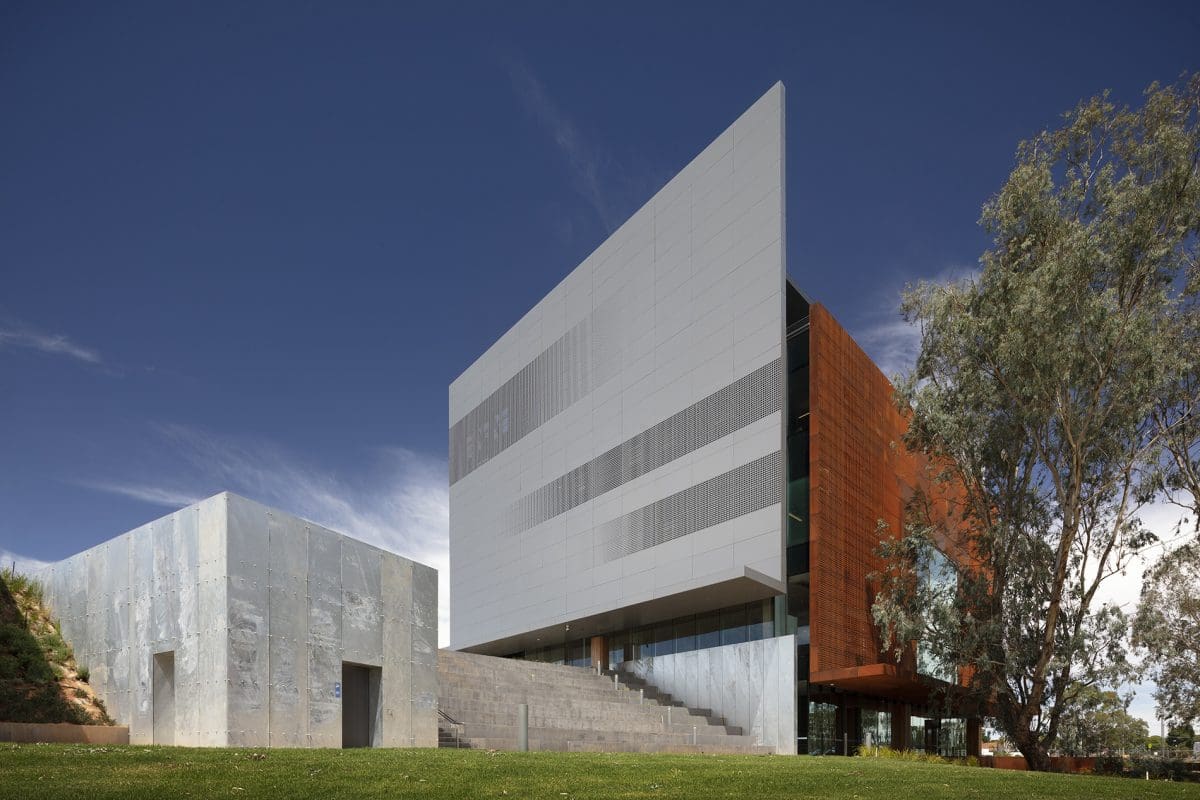
Making Space at the Table
NAP Contemporary’s group show, The Elephant Table, platforms six artists and voices—creating chaos, connection and conversation.





Recessed into some of the internal walls of the new $50m Shepparton Art Museum (SAM) are deep glass-fronted display areas. Within these, artistic director and CEO Rebecca Coates and her curators have carefully arranged a variety of prized ceramic artworks. SAM is well-known for its long association with ceramics—but it is just one aspect of the extensive new museum’s identity, being positioned as a major tourist drawcard.
The gleaming Denton Corker Marshall feat of architecture that is SAM, set on Lake Victoria near the centre of town, has been described by its makers as a “beacon in the landscape”. With an extraordinary line-up of eight exhibitions for its 20 November opening, Coates has emphasised not only SAM’s deep connection with Yorta Yorta Country and the strong local Indigenous population, but to the entire breadth of its growing community, one that is decidedly multicultural and diverse.

The building is as much a community hub as it is a stunning gallery, and it is set to change the map for regional art gallery visitation in Victoria—evidenced by the new five-level building’s inclusion of the tourist information centre, Kaiela Arts (an Indigenous group), a ceramics workshop and an outdoor amphitheatre.
Because SAM is a community hub and an art gallery, visitors will arrive for many reasons—to walk around the lake, get tourist info, visit a temporary or collection-based show, or have a cup of tea at the café that looks down over water and nearby banks of the Goulburn River. “All of those are successes,” Coates says. “It is interesting: I call it an ‘arts and cultural space’. And we all have culture we come from. If we can create a space to value that and learn more about it, then that is a massive success.”
One of the new shows is Brown Pots, beginning its studio pottery story in the 1950s and revealing a range of work encompassed within ceramics practice. This is being installed in some of the special showcases, as is Everyday Australian Design: Functional Design from the Ian Wong Collection, a survey of objects from Australian daily life and culture (such as the Esky). In the centrepiece collection-based show, FLOW, visitors can see Servant and Slave by Yhonnie Scarce, the 2018 Indigenous Ceramic Award winner, as well as more than 120 Namatjira family paintings displayed in a vast salon-style hang. And the first temporary exhibition (there will be three a year) is a retrospective of acclaimed Yorta Yorta artist Lin Onus, The Land Within.
Along with an interactive choreography-focussed installation, The Call to Echo by Amrita Hepi, and a Top Art & Design show called Fresh featuring year 11 and 12 Goulburn Valley art students, a range of other works have been installed in the many airy, light-filled spaces between the more formal gallery zones.

Among these is Danie Mellor’s stunning 13-panel work on a noncorreolationist thought, 2016. Mellor, who won SAM’s inaugural acquisitive Indigenous Ceramic Award in 2009, says SAM has developed a strong reputation for its active community engagement. “It’s very promising in terms of the programming,” he says. “Rebecca is very open to talking with artists and I have felt the conversations have been very rewarding. She has a great sensitivity towards artists and their practice.”
While Mellor’s work is one of the first things seen on entering SAM, even the exterior of the building has been activated: not only is there the Connection to Country installation by Maree Clarke, there are windows into some of the other partners’ spaces (such as Kaiela Arts) and an adjacent hillock for gatherings (incorporating the amphitheatre).
SAM’s Indigenous art curator Belinda Briggs sees much potential in this diversity: “People might say they are not arty or interested in the arts, but they probably know more than they think. Once you identify certain things to them, they are surprised. The way you furnish your house, your taste and style, how you are feeling, what books you read, how you get dressed.” All these aspects, she explains, help connect them.
Coates agrees: “We have a huge number of people in the community who have thought historically it’s not for them, or might still think the arts are elitist. Or they might come from countries where you haven’t got institutions like this.”
Coates expects the post-lockdown surge in regional tourism will help drive provision of more hotel beds in the city, and she has devised longer-term pathways to engage more potential visitors. For the first year at least, all the shows are free. “We want to make SAM a place that doesn’t prohibit people from coming for economic reasons,” she says.
Because sustainability is integral—the new building is six green star-rated—Coates is taking a fresh approach to plans for international shows. Huge blockbusters, she says, have massive crate-and-freight costs and environmental impacts, so she is more interested in a creative approach to overseas collaborations, to develop new ways of having a significant international presence each year. “That is a considered strategy,” she says.
SAM (Shepparton Art Museum)
Open daily from 20 November